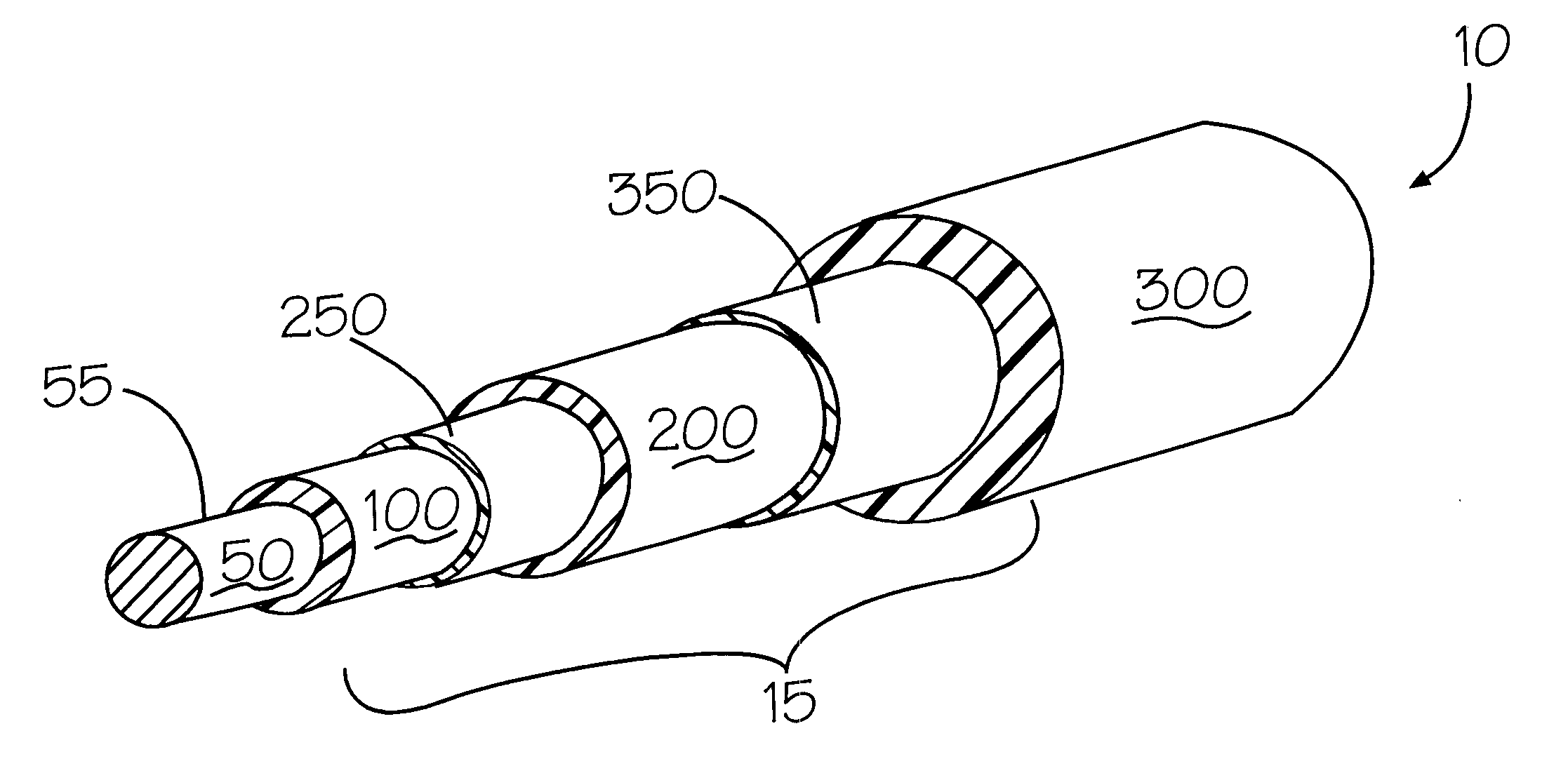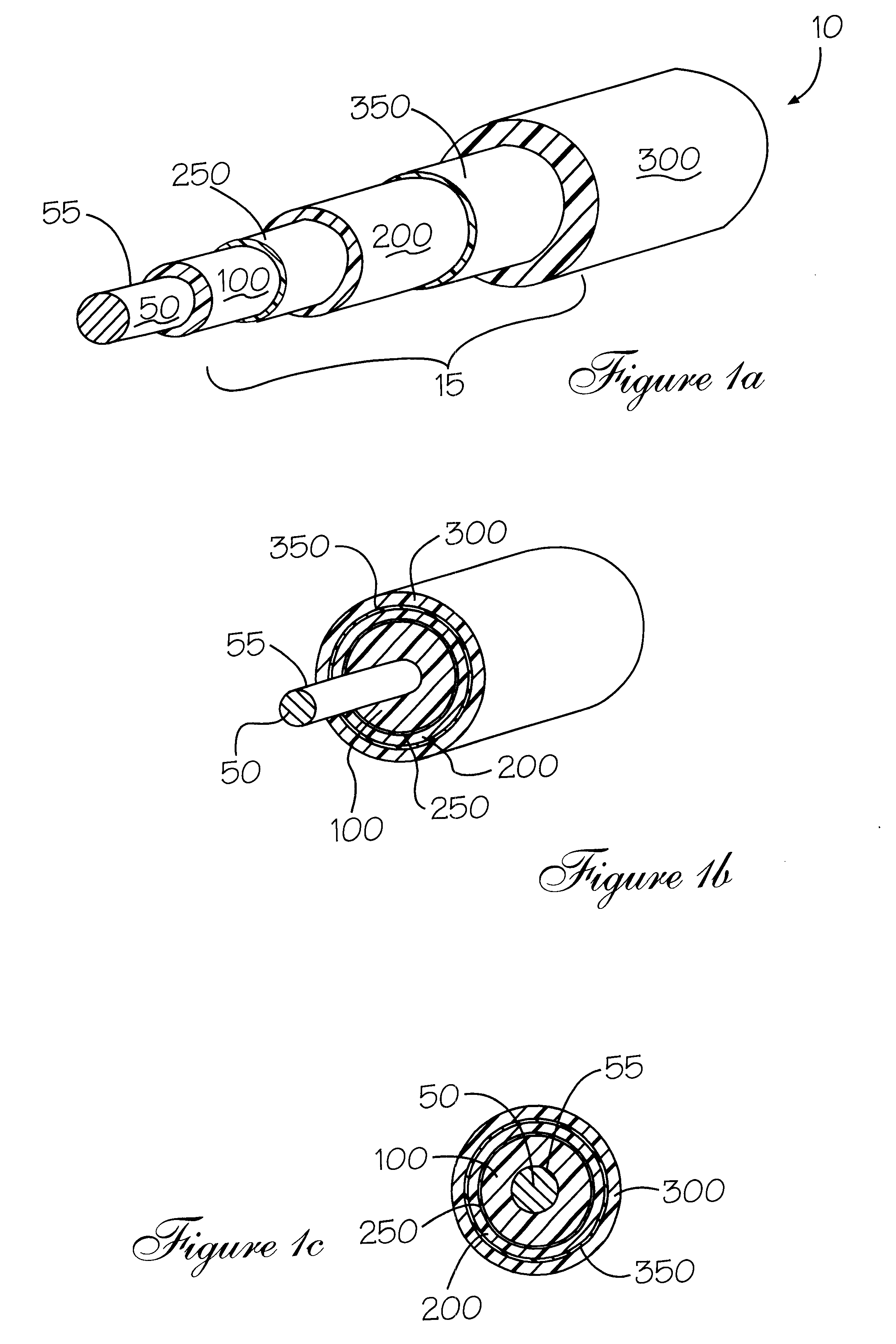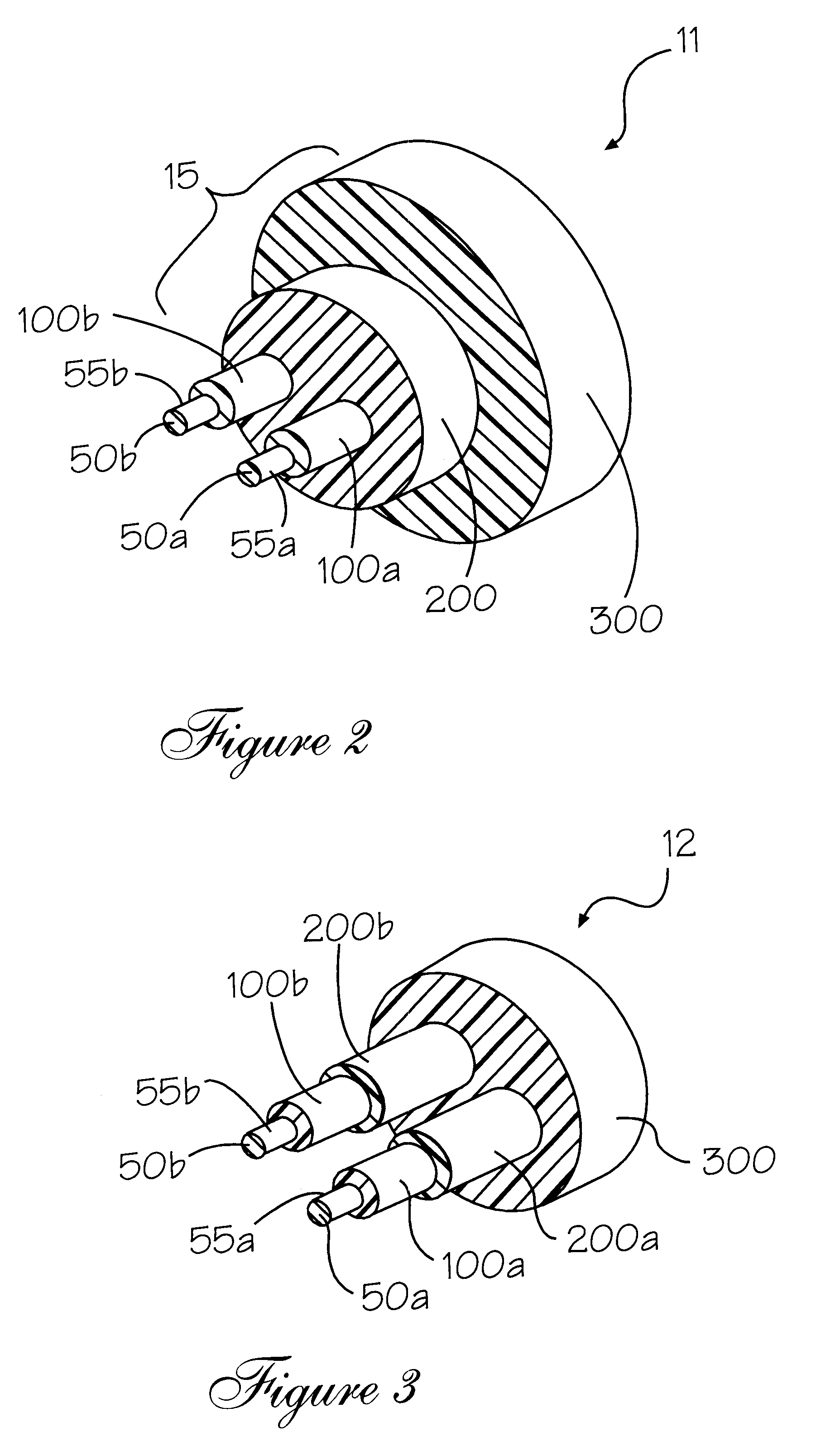Automotive-wire insulation
a technology for automobiles and wires, applied in the direction of insulated conductors, plastic/resin/waxes insulators, cables, etc., can solve the problems of oxidation of polyolefins, brittle insulation, and oxidation cracks on bending, and achieve excellent insulation. excellent, the effect of insulating properties
- Summary
- Abstract
- Description
- Claims
- Application Information
AI Technical Summary
Benefits of technology
Problems solved by technology
Method used
Image
Examples
example 2
n)
The wire as described in Example 1 is further coated with a third, outer insulative layer comprising a polymeric composition containing a co-polymer of ethylene and chlorotrifluoroethylene (ECTE) marketed by Ausimont USA Inc under the tradename HALAR.RTM.. This third layer has a 0.15 mm radial thickness. The critical test performed on Example 1 and 2 coated wires is described in ISO 6722-1 1996 sections 10.2 and 10.3.1 and is shown in Table I as "Days to 50% failure at 180.degree. C.".
To further illustrate the benefit of the current invention Examples 3 to 7 are provided where one or more of the insulative layers are removed. As will be noted there is a substantial increase in the "Days to 50% failure at 180.degree. C." when the entire inventive design comprising three insulative layers are employed compared to any of the comparative examples. This increase in lifetime is unexpected since no reported studies have been performed on the interaction of the degradative mechanisms of p...
example 3
on)
The wire article 10 comprises a conductive core 50 with a diameter of 0.95 mm bare copper that is surrounded by a composite insulation having insulative layer 200 extruded over the metal core. The insulative layer is 0.40 mm thick and comprises a cross-linked polyethylene (XLPE) that has been electron beam irradiated with approximately 150 kGy.
example 5 (
Invention)
The coated wire from Example 4 is further coated with a third, outer insulative layer of ethylene chlorotrifluoroethylene copolymer having a radial thickness of 0.075 mm.
PUM
| Property | Measurement | Unit |
|---|---|---|
| thick | aaaaa | aaaaa |
| operative temperature | aaaaa | aaaaa |
| temperature | aaaaa | aaaaa |
Abstract
Description
Claims
Application Information
 Login to View More
Login to View More - R&D
- Intellectual Property
- Life Sciences
- Materials
- Tech Scout
- Unparalleled Data Quality
- Higher Quality Content
- 60% Fewer Hallucinations
Browse by: Latest US Patents, China's latest patents, Technical Efficacy Thesaurus, Application Domain, Technology Topic, Popular Technical Reports.
© 2025 PatSnap. All rights reserved.Legal|Privacy policy|Modern Slavery Act Transparency Statement|Sitemap|About US| Contact US: help@patsnap.com



